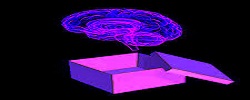
Acid Test: How to tell Minerals Apart

Acid test
There are a lot of ways to tell one mineral from another; color and shape are good indicators but they can deceive you. Mineralogists (people who study minerals) have other ways to test samples to see what they are. One of those ways is called the acid test.
Problem:
What happens when you put acid on different minerals? What does the acid test tell you?
Materials:
- Set of eight mineral samples: amethyst, azurite, calcite, lodestone, mica, rose quartz, talc, pyrite
- Bottle of vinegar
- Cup (non-reactive: don’t use a metal cup!)
- Eyedropper
- Magnifying glass
- Steel nail
- Paper towel
- Pencil and paper
Procedure:
- Create column headings across the top of your piece of paper by writing “Sample,” “Fizz,” and “Powder.”
- Along the left hand side of the page, under Sample, write the name of each mineral sample (amethyst, azurite, etc.)
- Put an inch or so of the vinegar into the cup so you can pick it up with the eyedropper.
- Put the first mineral sample on your list on the paper towel and use the eyedropper to put a drop of vinegar (dilute acid!) on it.
- Look at it closely with the magnifying glass. Is the vinegar bubbling and fizzing? If so, write “yes” in the Fizz column and skip the next step. If not, write “no” in the Fizz column and go to the next step.
- If the vinegar didn’t fizz in the last step, try to scratch your sample with the steel nail. If the nail won’t scratch the sample, write “too hard” in the Powder column. If the sample does get scratched, there will be a little powdered mineral in and around the scratch. Put a drop of vinegar on the powder.
- Use the magnifying glass again. Now is the vinegar fizzing? If so, write “yes” in the Powder column; if not, write “no” there.
- Repeat these steps with all of your samples.
- Now look at your results. Minerals that are made out of calcium carbonate will usually fizz on the first try. If they’re made of calcium carbonate but are bound together really tightly at the molecular level, you might need to powder them before they’ll fizz—that’s one way mineralogists tell the difference between calcite and dolomite, two similar-looking carbonate minerals, for example.